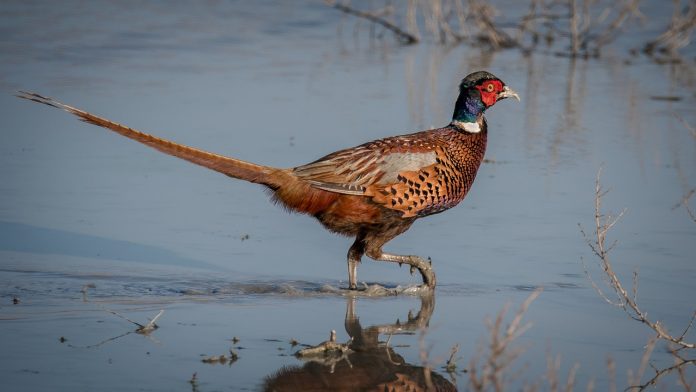Pheasant hunting and South Dakota go together like a horse and buggy. One can mention Iowa and North Dakota in a campfire conversation but when it gets right down to it, serious pheasant chasers immediately pass go and head directly west for the mixed farm crop and grasses of rural South Dakota, the one state that has carried the weight of being considered the national capital of such fast flying wing shooting.
If that rant reads like a long sentence, so be it, and if pounding the pavement for a butt-numbing thousand miles or more to experience a Dakota hunt sounds like a tiring and boring event, so be it, too.
Annual trip
A small group of pheasant fans including me have done an annual Dakota pheasant hunting trip for several years, trips that have included flushes of 50 or more pheasants, daily limits of three roosters, and plenty of exciting action.
Wild birds hunted on private land, the stuff wing shooters dream about. Keep in mind, that much of the fame South Dakota bathed in a couple decades ago was the result of a remarkable number of wild pheasants.
Why so many birds then? Because the planets were apparently aligned and the birds found everything to their liking. Absolutely everything.
Vast and undisturbed CRP grasses offered perfect nesting and hiding cover, countless wet swales and heavy brush kept the birds safe and warm year-around, consistently dry spring weather perfect for growing broods and fairly mild winters that allowed more birds to reach spring nesting time, and well, everything.
Changing times
But that was then and since then ethanol happened, CRP funding cuts happened, tough winters happened and severe droughts happened.
Combined, these factors plus other pheasant habitat losses have virtually brought pheasant numbers tumbling to much lower levels. This year, we decided to shake it up a bit and try hunting nothing but state-managed game land, something South Dakota has lots of.
Between national and state properties including game production areas, walk-in plots, and leased farmland, the hunter-friendly state can brag up tens of thousands of acres of public hunting, much of which provides excellent hunting, especially for non-residents.
Our plan centered on the fact that a late-season trip coupled with the knowledge that all or nearly all crops will have been harvested should concentrate the pheasants in the brush and grasses of the public access spots.
We booked several nights at the Oakwood Lake Lodge, near Bruce and close to several thousand acres of public hunting plots. The lodge, a private venue, was the highlight of our trip.
Extreme weather
Several clean and tastefully decorated bedrooms, a fully functioning modern kitchen and attractive living area provided us one of the, if not the best, of accommodations. But it was all downhill from there.
We planned to hunt three days. Then a Dakota radio voice declared a blizzard warning that caught our attention. On day one, the warning turned real. It started as high winds driving ice pellets that felt more like “shoot your eye out” BB’s, then turned into a full-blown gale of blinding snowflakes.
Day two produced brutal chill factors, with temperature stuck in the teens and the wind scooting at 30-50 mph. Day three was just as bad and the only pheasants we saw were riding the winds from one distant patch of cattail swamp to even further distant cover.
In just three days, we all found out why we insist on packing for all conditions, regardless of what weather we expect. I once heard a Dakota resident describe a Dakota gale as simply another breezy day.
He claimed that there is nothing between the North Pole and South Dakota except a barbed wire fence. I tend to think he was on spot. We did find several examples of just why the Dakota birds are down and struggling.
Loss of habitat
Many of the state-managed game lands and CPR are now being grazed or cut for hay out of concern for farmers who have been challenged by drought conditions. Even road-side ditches that are typically heavy with grass are mowed and baled, eliminating that source of cover.
There are now corn fields across the plains with little or no cover between fields. Even the normally expansive swales are mowed right to the edge of cattail rimmed potholes. It’s going to be a hard trip back for surviving pheasants if there is to be a population rebuild.













